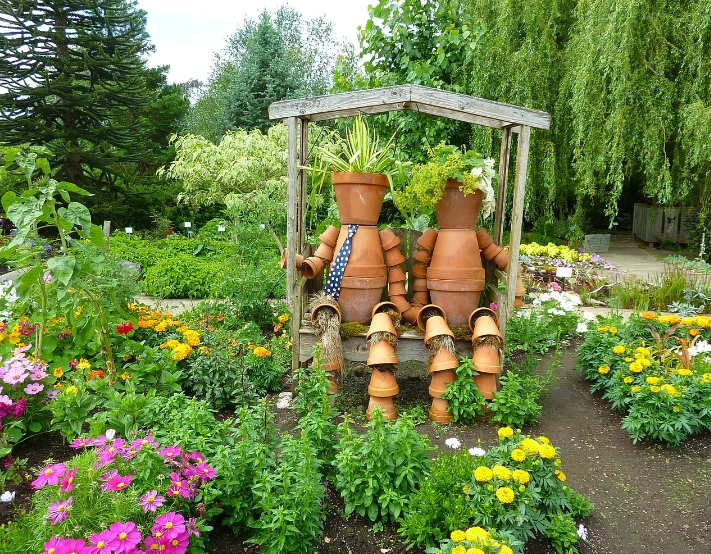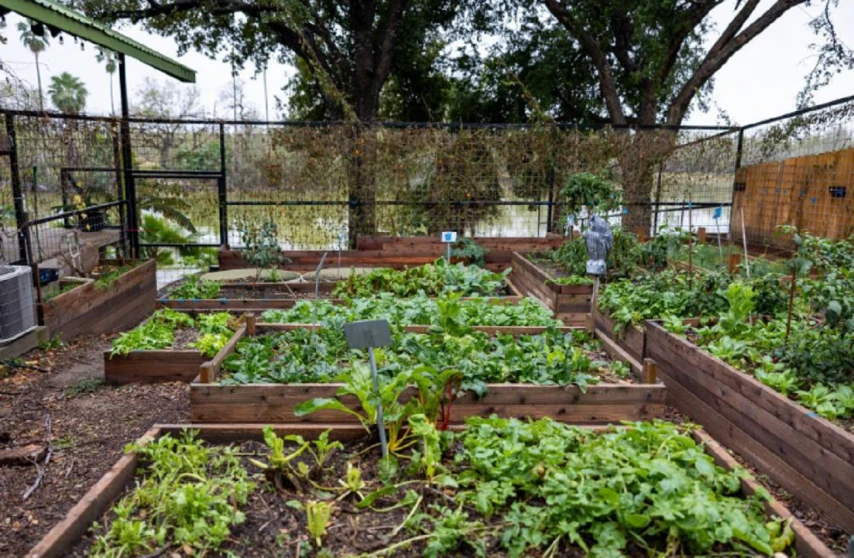Embracing Sustainability: Effective Techniques for Eco-Friendly Gardening

Sustainable gardening has gained significant traction in recent years as individuals and communities seek environmentally conscious practices to cultivate healthy, thriving gardens while minimizing their ecological footprint. By employing sustainable gardening techniques, gardeners can contribute to biodiversity, conserve natural resources, and promote a healthier planet. In this article, we will explore several effective sustainable gardening techniques that can be implemented in various types of gardens, from small urban plots to expansive rural landscapes.
Composting:
Composting is a cornerstone of sustainable gardening, as it allows gardeners to recycle organic waste and create nutrient-rich soil amendments. By composting kitchen scraps, yard waste, and other organic materials, gardeners can reduce the amount of waste sent to landfills while producing a valuable resource for their gardens. Compost enriches the soil, improves its structure, and supports the growth of healthy plants without relying on synthetic fertilizers.
Water Conservation:
Conserving water is essential for sustainable gardening, particularly in regions prone to drought or water scarcity. Implementing water-efficient irrigation systems, such as drip irrigation or soaker hoses, can minimize water waste by delivering moisture directly to plant roots. Additionally, collecting rainwater in barrels and utilizing mulch to retain soil moisture can further reduce the reliance on traditional water sources.
Native Plant Selection:
Choosing native plants for the garden promotes biodiversity and supports local ecosystems. Native plants are well-adapted to the natural conditions of a region, requiring less water, fertilizer, and pesticides compared to non-native species. By incorporating native plants into the garden, gardeners can create habitats for local wildlife, attract pollinators, and reduce the need for intensive maintenance practices.
Organic Pest and Disease Management:
Sustainable gardening emphasizes the use of natural and organic methods to manage pests and diseases. This includes practices such as companion planting, which involves growing mutually beneficial plant combinations to deter pests, and utilizing biological controls, such as predatory insects or beneficial nematodes, to regulate pest populations. Additionally, maintaining healthy soil and promoting plant diversity can enhance the garden's resilience to pests and diseases.
No-Till Gardening:
No-till or reduced-till gardening techniques minimize soil disturbance, preserving its structure and microbial life. By avoiding excessive tilling, gardeners can prevent soil erosion, retain moisture, and sequester carbon in the soil. Practices such as sheet mulching and lasagna gardening can be employed to establish new planting areas without disturbing the soil, promoting long-term soil health and fertility.
Permaculture Principles:
Embracing permaculture principles in gardening involves designing sustainable, self-sufficient ecosystems that mimic natural patterns and processes. By integrating elements such as food forests, perennial polycultures, and water-harvesting features, gardeners can create productive and resilient landscapes that require minimal external inputs while maximizing ecological benefits.
In conclusion, sustainable gardening techniques offer a holistic approach to cultivating gardens that are not only productive and visually appealing but also environmentally responsible. By incorporating practices such as composting, water conservation, native plant selection, organic pest management, no-till gardening, and permaculture principles, gardeners can play a vital role in promoting ecological balance and fostering resilient, thriving ecosystems.
----------------------------------------------------------------------------------------------------------------------------------
Sustainable gardening has gained significant traction in recent years as individuals and communities seek environmentally conscious practices to cultivate healthy, thriving gardens while minimizing their ecological footprint. By employing sustainable gardening techniques, gardeners can contribute to biodiversity, conserve natural resources, and promote a healthier planet. In this article, we will explore several effective sustainable gardening techniques that can be implemented in various types of gardens, from small urban plots to expansive rural landscapes.
Composting:
Composting is a cornerstone of sustainable gardening, as it allows gardeners to recycle organic waste and create nutrient-rich soil amendments. By composting kitchen scraps, yard waste, and other organic materials, gardeners can reduce the amount of waste sent to landfills while producing a valuable resource for their gardens. Compost enriches the soil, improves its structure, and supports the growth of healthy plants without relying on synthetic fertilizers.
Water Conservation:
Conserving water is essential for sustainable gardening, particularly in regions prone to drought or water scarcity. Implementing water-efficient irrigation systems, such as drip irrigation or soaker hoses, can minimize water waste by delivering moisture directly to plant roots. Additionally, collecting rainwater in barrels and utilizing mulch to retain soil moisture can further reduce the reliance on traditional water sources.
Native Plant Selection:
Choosing native plants for the garden promotes biodiversity and supports local ecosystems. Native plants are well-adapted to the natural conditions of a region, requiring less water, fertilizer, and pesticides compared to non-native species. By incorporating native plants into the garden, gardeners can create habitats for local wildlife, attract pollinators, and reduce the need for intensive maintenance practices.
Organic Pest and Disease Management:
Sustainable gardening emphasizes the use of natural and organic methods to manage pests and diseases. This includes practices such as companion planting, which involves growing mutually beneficial plant combinations to deter pests, and utilizing biological controls, such as predatory insects or beneficial nematodes, to regulate pest populations. Additionally, maintaining healthy soil and promoting plant diversity can enhance the garden's resilience to pests and diseases.
No-Till Gardening:
No-till or reduced-till gardening techniques minimize soil disturbance, preserving its structure and microbial life. By avoiding excessive tilling, gardeners can prevent soil erosion, retain moisture, and sequester carbon in the soil. Practices such as sheet mulching and lasagna gardening can be employed to establish new planting areas without disturbing the soil, promoting long-term soil health and fertility.
Permaculture Principles:
Embracing permaculture principles in gardening involves designing sustainable, self-sufficient ecosystems that mimic natural patterns and processes. By integrating elements such as food forests, perennial polycultures, and water-harvesting features, gardeners can create productive and resilient landscapes that require minimal external inputs while maximizing ecological benefits.
In conclusion, sustainable gardening techniques offer a holistic approach to cultivating gardens that are not only productive and visually appealing but also environmentally responsible. By incorporating practices such as composting, water conservation, native plant selection, organic pest management, no-till gardening, and permaculture principles, gardeners can play a vital role in promoting ecological balance and fostering resilient, thriving ecosystems.
---------------------------------------------------------------------------------------------------------------------------
Sustainable gardening has gained significant traction in recent years as individuals and communities seek environmentally conscious practices to cultivate healthy, thriving gardens while minimizing their ecological footprint. By employing sustainable gardening techniques, gardeners can contribute to biodiversity, conserve natural resources, and promote a healthier planet. In this article, we will explore several effective sustainable gardening techniques that can be implemented in various types of gardens, from small urban plots to expansive rural landscapes.
Composting:
Composting is a cornerstone of sustainable gardening, as it allows gardeners to recycle organic waste and create nutrient-rich soil amendments. By composting kitchen scraps, yard waste, and other organic materials, gardeners can reduce the amount of waste sent to landfills while producing a valuable resource for their gardens. Compost enriches the soil, improves its structure, and supports the growth of healthy plants without relying on synthetic fertilizers.
Water Conservation:
Conserving water is essential for sustainable gardening, particularly in regions prone to drought or water scarcity. Implementing water-efficient irrigation systems, such as drip irrigation or soaker hoses, can minimize water waste by delivering moisture directly to plant roots. Additionally, collecting rainwater in barrels and utilizing mulch to retain soil moisture can further reduce the reliance on traditional water sources.
Native Plant Selection:
Choosing native plants for the garden promotes biodiversity and supports local ecosystems. Native plants are well-adapted to the natural conditions of a region, requiring less water, fertilizer, and pesticides compared to non-native species. By incorporating native plants into the garden, gardeners can create habitats for local wildlife, attract pollinators, and reduce the need for intensive maintenance practices.
Organic Pest and Disease Management:
Sustainable gardening emphasizes the use of natural and organic methods to manage pests and diseases. This includes practices such as companion planting, which involves growing mutually beneficial plant combinations to deter pests, and utilizing biological controls, such as predatory insects or beneficial nematodes, to regulate pest populations. Additionally, maintaining healthy soil and promoting plant diversity can enhance the garden's resilience to pests and diseases.
No-Till Gardening:
No-till or reduced-till gardening techniques minimize soil disturbance, preserving its structure and microbial life. By avoiding excessive tilling, gardeners can prevent soil erosion, retain moisture, and sequester carbon in the soil. Practices such as sheet mulching and lasagna gardening can be employed to establish new planting areas without disturbing the soil, promoting long-term soil health and fertility.
Permaculture Principles:
Embracing permaculture principles in gardening involves designing sustainable, self-sufficient ecosystems that mimic natural patterns and processes. By integrating elements such as food forests, perennial polycultures, and water-harvesting features, gardeners can create productive and resilient landscapes that require minimal external inputs while maximizing ecological benefits.
In conclusion, sustainable gardening techniques offer a holistic approach to cultivating gardens that are not only productive and visually appealing but also environmentally responsible. By incorporating practices such as composting, water conservation, native plant selection, organic pest management, no-till gardening, and permaculture principles, gardeners can play a vital role in promoting ecological balance and fostering resilient, thriving ecosystems.
